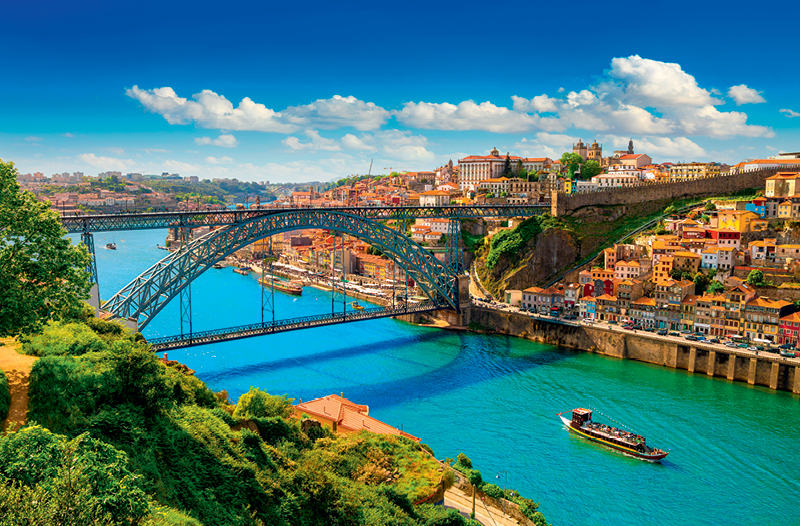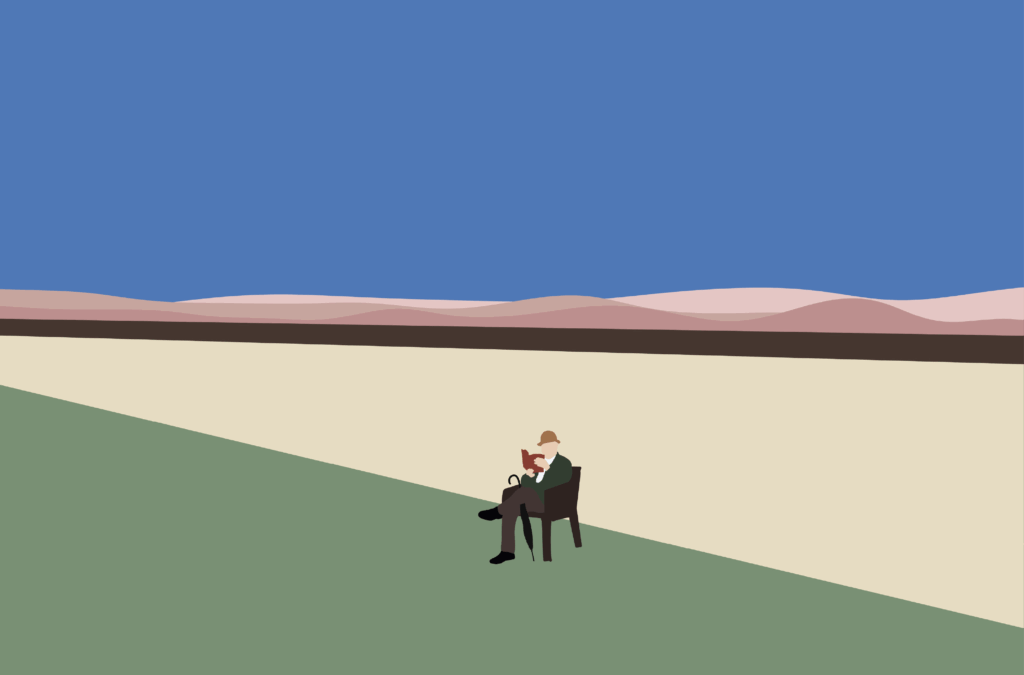
The Skinny on Chile

Many people can find Chile on a map, yet few can tell you anything about it.
When to go
Due to Chile’s extensive length, the north is dry year-round while the Patagonian south is in nearly perpetual winter. October through December (springtime) and March to June (autumn) are safe bets.
Currency
Chilean peso; US$1 = CLP931
Language
Spanish, though Chilean Spanish has a distinctive rhythm that can be confusing to other Spanish speakers.
Companies to consider
Intrepid Travel, Insight Vacations, G Adventures, Silversea Cruises, Viking Cruises
They might mention the South American country’s abnormal shape—long and thin—as its prevailing characteristic, and there’s something to that. The strip of land is 2,653 miles long yet only 109 miles wide on average, giving it a skinny profile that stands out in the world of geometric geography.
Yet there’s much more to Chile than just its shape on the bottom left of a Mercator projection. The land offers a staggering amount of natural diversity—from the unreal Atacama Desert plateau to the southern Lake District, from soaring mountains and volcanoes to deep fjords—all presented in the most grandiose, eye-popping ways. The country is filled with kindness and culture, hot springs and hot beaches, wide-open skies for stargazing and wide-open bottles for wine tasting.
Chile is the ideal destination for discoveries. This is why we travel, after all, to go beyond our surface-level understanding of places. When you’re ready to discover more about Chile, here are some highlights to dive into.

Cities of Wonder
When tackling a country for the first time, we tend to venture first to the cities, because they make the most sense to us…until entering Valparaíso, the “Jewel of the Pacific.” Let’s just say that the streets here are vertically ambitious. Comprising a gorgeous, natural harbor surrounded by 42 rolling hills, the city comes at you from all angles.
Around each corner is another wonder to admire—whether it’s the colorfully painted staircases that seemingly stretch up to the sky, cozy art galleries tucked away in winding alleys, or historic funicular elevators that sweep you heavenward to enjoy panoramic views over the city. One such view can be found at the top of Bellavista Hill, an area once favored by artists and poets and now home to an astounding collection of murals. Once you take in the spectacular view of Valparaíso Bay, check out La Sebastiana, a mesmerizing house-museum dedicated to renowned Chilean poet and Nobel Prize winner Pablo Neruda.
The capital city of Santiago, a quick two-hour car ride from Valparaíso, is quite poetic itself. With some of South America’s largest skyscrapers backdropped by snow-topped Andes mountains, the city of over five million residents gives off something of a Denver vibe. The best views can be found 4,265 feet above the city at San Cristóbal Hill, which is surrounded by Metropolitan Park, the largest urban park in Chile, while some of the best drinks are in the Bellavista district (different from the hill mentioned above), a bohemian neighborhood packed with pubs, bars, and clubs that are jumping every night.

Drinking in the Culture
Leaving the cities gives you the chance to discover Chile’s history and soul through its numerous indigenous peoples. The country’s ancestral roots and traditions come alive when you interact with its native people, visiting their sacred lands, spending the day with locals, or taking cooking classes to learn about their traditional meals.
While there are numerous indigenous peoples in the country—including Mapuche, Aymara, Colla, and Quechua—the people of Rapa Nui are distinctively intriguing. Rapa Nui, the indigenous name of Easter Island, is a Chilean territory 2,200 miles off the mainland’s coast. Its people prospered for centuries in complete isolation, creating a complex Polynesian society that is best known today for the 1,000 or so giant moai sculptures made of compact volcanic ash that dot the island. To walk amid these silent spectators that represent deified ancestors is to stare history in its face.

One common thread tying the Chilean people together is their love of horses. Locals have used horses for travel and agriculture for millennia, trusting their sure-footed nature to navigate rocky trails up and over mountain passes. Exploring the country’s dramatic landscapes atop a sturdy steed is an unforgettable experience, especially when you’re riding along the beach and over sand dunes near the fishing village of Mantagua or accompanying real Chilean cowboys across rocky riverbeds in the Andes.
The most popular horse tours introduce you to one of Chile’s favorite exports: wine. Chile is one of the top wine-producing countries in the world, thanks to a surprisingly diverse terroir that creates a wide range of varietals. With nearly 800 active wineries to choose from, finding a location to sample the syrah and drink in the view will be easy. However, two you shouldn’t miss are MontGras in the Colchagua Valley, where you are taught how to make your own blend, and the famed Undurraga Winery in the Maipo Valley, one of the country’s oldest, where you can enjoy a bottle of the estate’s finest while picnicking in its elegant 19th-century park.

Natural Perfection
What makes visiting Chile so special is the sheer audacity and wondrous scope of its natural gifts. And gifted it is, being home to the driest desert in the world, Patagonia’s perilous peaks, and everything in between.
Let’s start with the Lake District in Chile’s south. Bookended by the cities of Temuco to the north and Puerto Montt in the south, this massive collection of lakes is surrounded by snow-capped volcanoes and dense, wooded valleys filled with 1,000-year-old trees. It’s hard to know where to look when here, because every direction, high and low, demands your attention. The views mirrored in the pale-green glacial waters seem unreal, yet the reality of this alpine utopia unfolds blissfully as you hike from town to town.
In stark contrast is the Atacama Desert in the north. Eerily breathtaking, the red-rocked landscape looks more akin to Mars during the day, with a rust-colored plateau of steaming geysers, unending salt flats, sandstone ridges, and pink Andean flamingoes, all watched over by the 19,409-foot-high Licancabur volcano. Yet the real show starts at night, when South America’s clearest sky lights up to reveal an infinity of stars and a swirling Milky Way. No telescope is needed to enjoy the view, but you may need another tool to pick your jaw up off the ground.

We can’t leave Chile without mentioning Patagonia in the south and its skyward gem, Torres del Paine National Park. Here you’ll find icebergs flowing down rivers, Andean condors stretching their nine-foot wingspans high in the sky, and the continent’s first cave drawings telling ancient stories. The focal point amid all this is the namesake Towers of Paine, three stark, granite spires soaring up to 8,200 feet high, standing sentinel over serene glacial lakes and snow-spotted grasslands.
In the summer, this southern tip of the continent receives 17 hours of daylight each day, and you’re going to need each one to experience it all. That holds true for the rest of the country, for Chile is a place where relaxation is possible but not advised: there’s just so much to see, and you’re going to love it all.
With so much coastline, along with the fertile biodiversity of numerous climates, Chile produces a wide variety of culinary ingredients that are combined in both traditional and modern ways. The resulting dishes are always fresh and flavorful, and they always go great when paired with a local wine. Here are a few specialties to look for when you visit.
Pastel de choclo > A home-cooked favorite, this casserole-like pie includes ground beef or chicken, onions, hard-boiled eggs, and dough made from ground choclo, a large-kernelled Peruvian corn.
Chorrillana > Head to a bar to find these French fries covered in a combination of fried or scrambled eggs, strips of beef, and caramelized onions.
Humitas > This popular Andean street food consists of fresh corn mashed together with onion, basil, and butter, all wrapped in corn husks and baked.
Machas a la parmesana > Razor clams are baked in their shell and mixed with a combination of cheese and wine.
Kunstmann > Thanks to a large population of German immigrants, beer is a popular beverage throughout the land, including this well loved brand.
Mote con huesillo > This refreshing peach and barley dessert drink is especially welcomed in the Southern Hemisphere summer months of December, January, and February.

Naturally, a country with nearly 4,000 miles of coastline will have a host of thriving seaports and coastal villages to explore. Sailings here are typically part of longer voyages that thread through Patagonia to connect with Argentina, cruising past some of the most remote places in the world along the way. Here are a few highlights.
Cape Horn, Chile > The southernmost point of Tierra del Fuego, this windswept, rocky headland is about as remote as you can get. On your visit, be sure to visit Cabo de Hornos National Park, a 155,906-acre UNESCO protected ecosystem.
Punta Arenas, Chile > Situated on the fabled Strait of Magellan, this coastal city has a fascinating maritime history, which you can discover at the Nao Victoria Museum. Nearby Magdalena Island hosts a photogenic colony of 120,000 penguins.
Puerto Montt, Chile > A southern Chilean city originally populated by Germans in 1853, Puerto Montt now attracts numerous visitors who wish to enjoy Llanquihue Lake, the country’s second-largest lake, which is scenically watched over by two picturesque volcanoes.
Ushuaia, Argentina > The city with the most southern latitude, Ushuaia was once a missionary base, penal colony, and naval base, but now it’s a popular gateway to the glaciers and fjords of Tierra del Fuego and Antarctica.





